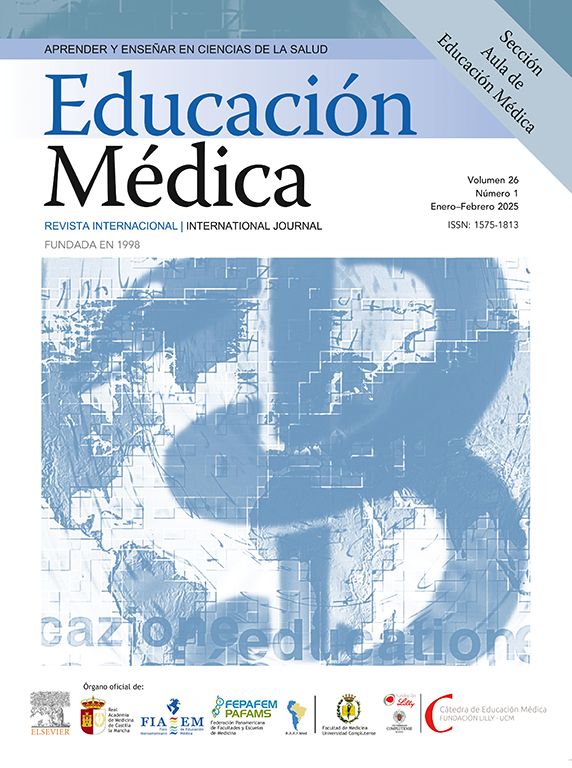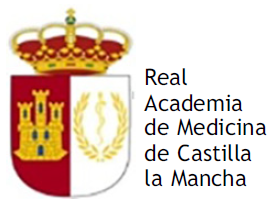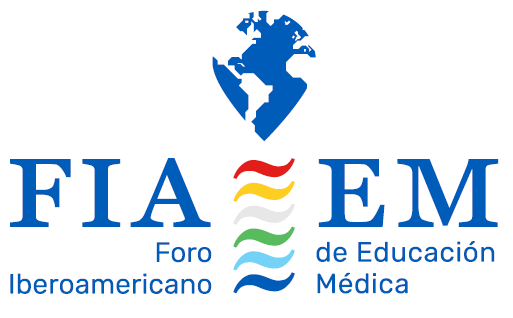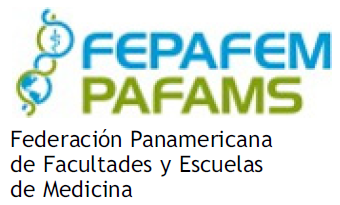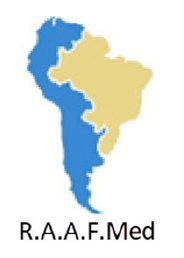When transitioning from high school to an undergraduate medical program that uses active teaching methodologies, students often encounter clear obstacles in their first semester, such as breaking down disciplinary barriers, adapting to the dynamics of different curricular components, adjusting to an evaluation process that is different from what they are used to, as well as a lack of understanding of the program's pedagogical proposal. This study aims to understand the challenges faced by medical undergraduate students in their first semester, specifically in relation to the use of active teaching methodologies within an integrated curriculum.
Material and methodsA qualitative study was conducted through interviews with 15 students from a private medical school who started in the first semester of 2018. The data were categorized and subjected to discourse analysis.
ResultsThe interviewees reported difficulties in understanding the educational proposal. Although they viewed the experience of adapting to the course's methodology positively, they found it challenging. They reported that there was insufficient explanation about the evaluation processes and proposed that clearer educational objectives be established for the students.
ConclusionThe need for a more comprehensive explanation of the pedagogical project and its teaching strategies, the importance of valuing practical training in health services, and the clarification of evaluation processes and educational objectives were highlighted by the interviewed students as key pillars for a successful transition from high school to medical education.
La transición del bachillerato a un programa de medicina de pregrado que utiliza metodologías activas de enseñanza suele representar desafíos claros en el primer semestre. Estos incluyen romper barreras disciplinarias, adaptarse a dinámicas curriculares diferentes, enfrentarse a procesos de evaluación desconocidos y comprender la propuesta pedagógica del programa. Este estudio busca comprender los desafíos enfrentados por los estudiantes de medicina durante su primer semestre, específicamente en relación con el uso de metodologías activas en un currículo integrado.
Material y metodosSe realizó un estudio cualitativo mediante entrevistas con 15 estudiantes de una escuela de medicina privada que iniciaron el curso en el primer semestre de 2018. Los datos se categorizaron y analizaron a través de análisis de discurso. Resultados: Los entrevistados reportaron dificultades para entender la propuesta educativa. Aunque perciben positivamente la experiencia de adaptación a la metodología del curso, encontraron obstáculos significativos, como la falta de explicaciones claras sobre los procesos de evaluación. Propusieron la necesidad de establecer objetivos educativos más claros.
ConclusiónSe destaca la necesidad de una explicación más completa del proyecto pedagógico y sus estrategias de enseñanza, la importancia de valorar la formación práctica en los servicios de salud y la clarificación de los procesos de evaluación y los objetivos educativos como pilares clave para una transición exitosa del bachillerato a la educación médica.
The transition from Brazilian high schools to undergraduate medical education presents significant challenges, particularly in programs using Problem-Based Learning (PBL), known in Brazil as Aprendizagem Baseada em Problemas (ABP). The adoption of ABP as an active learning methodology became widespread in Brazil after the publication of the new National Curriculum Guidelines (DCN) in 2014. These guidelines encouraged medical schools across the country, both public and private, to implement integrated curricula centered on active methodologies such as ABP. Currently, medical schools that maintain a traditional model of large group lectures represent a minority. The widespread shift to ABP has been driven by the need to align medical education with the Brazilian Unified Health System (Sistema Único de Saúde - SUS), which serves as a primary training ground for medical students.2,5,6,10
The Unified Health System operates on the principles of universality, equity, and comprehensiveness, emphasizing interdisciplinary work and integrated healthcare delivery. Medical schools recognized that these principles would be better developed through integrated curricula supported by ABP. This methodology fosters interdisciplinary knowledge construction, critical thinking, and problem-solving skills, which are essential for professional practice within the SUS context. Consequently, ABP is now viewed as a suitable pedagogical strategy to prepare students for the complexities of the healthcare system, bridging the gap between theoretical knowledge and practical application.2,5,6,10
This difficulty stems from a substantial misalignment between the traditional teaching strategies employed in high schools and the active methodologies applied in medical schools. Specifically, students face challenges in adapting to the shift of the educational process's focus from teacher-centered to student-centered learning. Moreover, the evaluation methods and integration of disciplines differ markedly from their prior experiences, compounding the difficulty. These issues highlight the need to understand students' perceptions of this transition and to identify strategies that facilitate their adaptation.1–19
The evaluation mechanisms in high schools, designed primarily to prepare students for college entrance exams, conflict with the competencies and integrative approaches required in medical education. Consequently, students often struggle to restructure their study habits and adapt to new assessment methodologies that emphasize problem-solving and critical thinking. These discrepancies underscore the importance of investigating how students perceive and navigate this transition.3,8,13
In the academic context, integrated curricula have emerged as a response to the need for training medical professionals capable of addressing complex healthcare demands. Such curricula require students to mobilize knowledge across disciplines, which can be particularly disorienting for those accustomed to traditional, discipline-based learning. This disorientation is compounded by a lack of clarity in the roles of educators and students in active methodologies, further challenging the adaptation process.6,8
While existing literature on the academic transition to higher education often focuses on physical infrastructure or logistical barriers, less attention has been given to students' experiences with pedagogical shifts. This study aims to bridge this gap by analyzing the perceptions of first-semester medical students transitioning from high school to a PBL-integrated curriculum. By understanding their challenges, this research seeks to identify strategies to improve the academic transition and enhance learning outcomes.6,11,14,17
Material and methodsThis study employed an exploratory qualitative approach to investigate the perceptions of first-semester medical students regarding their academic transition from high school to a medical program using active learning methodologies within an integrated curriculum.
To analyze the students' experiences, we adopted Foucauldian discourse analysis, which focuses on describing the conditions of existence of specific discourses rather than uncovering hidden meanings or intentions behind texts. This methodological approach allowed us to explore the complexities of the students' adaptation process in detail.20–24
Participants: The study included 15 first-semester medical students enrolled in a private medical school. Participants were selected based on the following inclusion criteria: regular enrollment in the medical program, active participation in academic activities for up to 60 days, and no prior experience in higher education. These criteria ensured a homogeneous sample of students experiencing the transition for the first time. The sample was selected by convenience, including only students who met the defined inclusion criteria. These details are presented in Table 1.
Research participants.
| Interview | Age (years) | Sex | Time elapsed since high school completion |
|---|---|---|---|
| 1 | 18 | Female | Less than 1 year |
| 2 | 18 | Male | Less than 1 year |
| 3 | 19 | Male | Between 1 and 2 years |
| 4 | 19 | Female | Between 1 and 2 years |
| 5 | 19 | Female | Less than 1 year |
| 6 | 19 | Male | Less than 1 year |
| 7 | 19 | Female | Between 1 and 2 years |
| 8 | 18 | Female | Less than 1 year |
| 9 | 18 | Female | Less than 1 year |
| 10 | 18 | Female | Less than 1 year |
| 11 | 18 | Female | Less than 1 year |
| 12 | 17 | Female | Less than 1 year |
| 13 | 19 | Female | Less than 1 year |
| 14 | 19 | Female | Less than 1 year |
| 15 | 19 | Female | Less than 1 year |
Source: Prepared by the authors (2023).
Data Collection: Semi-structured interviews were conducted, guided by open-ended questions designed to explore potential barriers and facilitators encountered during the academic transition. Topics included active methodologies, the integrated curriculum, and assessment practices. All interviews were recorded, transcribed verbatim, and anonymized to ensure confidentiality. The interview script was developed based on the literature and reviewed by the research team, composed of experts in medical education, until a consensus was reached regarding its content. These procedural steps are presented in Table 2.
Procedural Steps.
| Steps | Description |
|---|---|
| 1. Obtain data in its “raw” form. | Full audio recordings and transcripts. |
| 2. Delve deeply into each record. | Separate listening sessions and readings, with the goal of identifying the core meanings in the responses from the participants. |
| 3. Perform categorization. | Researchers determine the categories based on their own analysis. |
| 4. Identify the themes or types mentioned within each category. | After each interview has been analyzed by the researchers, the responses deemed representative are emphasized based on the central idea identified. |
| 5. Encode or label the data | Label the themes listed to each category. |
| 6. Organize and display the themes and types of statements on a table. | The table presents the results in a clear and concise manner, facilitating interpretation. |
Data Analysis: The data were independently coded by each researcher, and themes were identified collaboratively through an iterative process. Agreement on the definitive coding framework was reached by consensus. This process ensured rigor and reliability in identifying key themes related to the participants' experiences.
Ethical Considerations: The Ethics and Research Committee of the State University of Pará approved the study, in accordance with national and international guidelines for qualitative research. Participants provided informed consent before participating, and their anonymity was maintained throughout the study.
ResultsThe study analyzed the experiences of 15 first-semester medical students, of whom 12 were female and 3 males, aged between 17 and 19 years. Four main themes emerged from the interviews, revealing significant challenges and insights into the academic transition to medical education using active methodologies.
- 1.
Teaching Methodology and How It Operates
Students expressed significant difficulties in understanding the integrated curriculum and the proposed methodology. Many highlighted a lack of guidance during the initial phase of the course. As one participant noted:
“At the beginning of the course, everybody - including me - found it very difficult to understand how everything worked. There was no help, so only those who were friends with the senior students were able to help us to understand how things worked here” (Interview 5).
Other students questioned the absence of traditional components like anatomy classes. For example:
“I don't understand why there's no anatomy class. How am I supposed to become a doctor without it?” (Interview 6).
The overwhelming volume of content and the integration of topics also posed challenges:
“I have faced many obstacles in this course, especially regarding the amount of content. In the past, the test only covered what the teacher taught. Now it's different, which is a big change from high school” (Interview 9).
Finally, students expressed uncertainty about their study methods:
“I was jumping from one topic to another because many are related, but I'm not sure if I'm studying correctly or if I should be less curious and more focused on my study plan” (Interview 14).
It is observed that the participants have a poor understanding of curriculum integration, the proposed methodology, and the learning objectives. They also lack comprehension of the teacher's role as a learning facilitator. Students usually prefer to turn to their senior peers to clarify their doubts about what and how they should study. By doing so, they highlight the shortcomings of the guidance provided by the staff during the introductory and welcoming period for students, as well as the lack of communication between students, teachers, and course administrators. Students consider that interacting with other students from later semesters is more effective.
- 2.
Evaluation Processes
Participants frequently expressed frustration with the evaluation methods, citing a lack of transparency and preparation. One student commented:
“I think that during the freshman week, the lectures are informative, but I believe there should be some moments dedicated to explaining the evaluation process. Additionally, I think that receiving proper guidance on how to approach scientific work is highly important, as my professor only provided such guidance two weeks before” (Interview 4).
The difficulty in understanding the evaluation criteria was another recurring concern:
“The scientific work that we were required to complete was very complex, as we were not provided with a clear explanation of how it should be done. Then, when it came time for grading, the evaluation was strict” (Interview 5).
Group evaluations and self-assessments were also points of contention:
“The tutor gives the same grade to the entire group, which I believe is unfair” (Interview 10).
“I do not appreciate self-evaluations. When my tutor asked me how much I thought I deserved, I answered with 5, but was given a 4. This leaves me questioning why I was asked in the first place” (Interview 11).
The participants express discontent with the way they are evaluated as they do not understand the criteria used. Self-evaluation is uncomfortable for students and achieving a “good grade” remains a central objective for the interviewees.
- 3.
Valorization of Healthcare Service Learning
Students consistently highlighted the importance of practical activities in healthcare settings, describing these experiences as valuable and meaningful. For instance:
“From the first semester, which is great, we have practical activities within the medical context to become familiar with our reality and experience the profession” (Interview 1).
The opportunity to interact with patients and understand real-world scenarios was particularly appreciated:
“Learning by doing, especially interacting with patients, has been the most positive aspect of the course so far” (Interview 15).
According to the interviewees, the healthcare service teaching activity was the most easily adaptable among all the curriculum components. The reasons pointed out include learning by doing, practicing the doctor-patient relationship, and being close to the reality of the profession.
- 4.
Educational Objectives and Factors that Interfere with Learning
A lack of clarity regarding educational objectives emerged as a major concern. As one participant explained:
“The absence of a clear definition of the boundaries between the subjects is a significant problem for us” (Interview 1).
Students noted that integrating subjects like anatomy, physiology, and clinical skills was beneficial but challenging without proper guidance:
“It is better to study the anatomy of the heart, the histology of the heart, and the physiology of the heart together. It would be worse if we were studying the anatomy of the heart and the physiology of the brain. Integrating the subjects is better” (Interview 12).
Participants also pointed out a disconnect between the curriculum's integrative approach and the disciplinary nature of most textbooks:
“We cannot study a subject as presented in the textbook because it feels like a jigsaw puzzle with everything separated” (Interview 8).
The interviewees state that they are unsure of how far they should delve into a specific topic and highlight the lack of clarity in defining the studied themes as a significant problem. The combined study of anatomy, radiology, histology, and pathology of a particular region is regarded as a facilitator for comprehending the proposed subjects. However, since each disciplinary approach is extensive and becomes more complex when integrated, students struggle with the absence of a defined limit to avoid unnecessary deepening of their studies at the initial stages of the medical course.
In the speeches, another obstacle is mentioned: the disconnect between the recommended books and the proposal for an integrated curriculum. This is because most of the available literature is disciplinary in nature, although some recent publications have aimed at integrating approaches in medical education.
DiscussionThe present study reveals that difficulties in the academic transition from high school to medical school are strongly associated with students' lack of understanding of the course methodology, evaluation processes, and educational objectives. While participants were satisfied with their first semester, the transition posed significant challenges that impacted their learning experiences.
Starting medical school is a moment of great satisfaction for most students, as it represents the realization of personal and professional aspirations. However, this does not diminish the obstacles they face during the transition, particularly when exposed to a new educational approach that is poorly introduced.6,8,13 As noted in the results, students felt unprepared for the integrated curriculum and active methodologies, which often led to confusion and frustration. This gap highlights the importance of clear and consistent communication between educators, course administrators, and students.6,8,18
Participants demonstrated an understanding of the benefits of active methodologies, particularly in fostering comprehensive knowledge and critical thinking.4,17 However, their prior experiences in high school, where learning was heavily discipline-based, made adapting to integrated curricula challenging.6,13,18
Evaluation processes emerged as another significant area of concern. Students reported dissatisfaction with the lack of clarity and fairness in assessment criteria, particularly regarding self-assessment and group evaluations.3,8 These methods were perceived as subjective and inconsistent, which undermined their confidence in the system. Previous studies have highlighted the importance of transparent and standardized evaluation practices, as they play a crucial role in building trust and supporting learning outcomes.9,10,16 Addressing this issue requires implementing clear rubrics and providing students with early exposure to evaluation formats, such as structured clinical exams.10,16
Despite these challenges, students expressed strong appreciation for practical learning opportunities in healthcare settings. Activities that allowed direct interaction with patients and exposure to real-world scenarios were described as meaningful and motivational.2,11,15 These experiences bridged theoretical learning with clinical practice, fostering students' confidence in their future roles as healthcare professionals. Service-learning opportunities were not only valued but also served as critical elements in connecting classroom knowledge to real-world applications, making the educational experience more relevant and engaging.
Another key finding was the difficulty students faced in understanding and prioritizing their educational objectives. The extensive reading materials and lack of curated guidance often led to ineffective study strategies, contributing to feelings of being overwhelmed.13,18 This challenge highlights the importance of defining achievable and realistic learning goals, which should be explicitly communicated to students. Faculty training in curriculum design and alignment is critical to ensure that students can navigate integrated courses effectively.6,22
This study has certain limitations that should be considered when interpreting its findings. First, it was conducted at a single institution, which may limit the generalizability of the results to other medical schools with different curricular structures or student demographics. Second, the small sample size, although adequate for qualitative analysis, may not capture the full diversity of experiences and perspectives among first-semester medical students. It is important to highlight that the scarcity of similar studies in the Brazilian context limits the comparison of our findings with other references. This reinforces the innovative nature of this research in exploring the academic transition to medical school through the students' perspective.
It is important to emphasize that the study focused exclusively on students' perceptions, as they are considered the main agents and protagonists in the learning process. The inclusion of teachers' or administrators' perspectives was not part of the study's objective. Additionally, the study was limited to the students' first semester, which does not allow for an evaluation of how their perceptions and adaptations evolve over time. A longitudinal approach could provide a more comprehensive understanding of the academic transition process. Regarding potential selection bias, it is worth noting that the student profile at the institution where the study was conducted is relatively homogeneous, which helps to minimize this risk.
Students' reflections focused predominantly on the medical school experience itself rather than their prior educational background. This can be considered a potential bias in data interpretation. However, within a qualitative approach, the aim is to understand the phenomenon from the participants' perspectives in their natural environment, not to validate an initial hypothesis, which is more typical of quantitative research. Future studies with larger and more diverse samples across multiple institutions are needed to validate and expand upon these findings.
In summary, the findings highlight the critical role of institutional strategies in supporting students during their transition to medical education. By addressing the identified gaps in communication, evaluation, and curriculum integration, educators can create a more inclusive and effective learning environment. Practical learning opportunities, such as early exposure to healthcare settings, were highly valued by the students, providing meaningful experiences that bridged theoretical knowledge with clinical practice. These measures are essential for promoting student success and ensuring that medical education aligns with the evolving needs of future healthcare professionals.
FundingNo authors have received any funding for this research. The study was conducted independently, and all costs associated with its execution were covered by the authors themselves.
Ethics committeeThe authors declare that this study adhered to all ethical principles for research involving human participants. The study protocol was reviewed and approved by the Research Ethics Committee of the Centro Universitário da Amazônia (UNIFAMAZ) under Opinion Number 2.828.631 and CAAE: 89579818.0.0000.5701. All participants provided informed consent prior to their involvement in the study, and their anonymity and confidentiality were strictly maintained throughout the research process.
The authors declare no conflict of interest.



